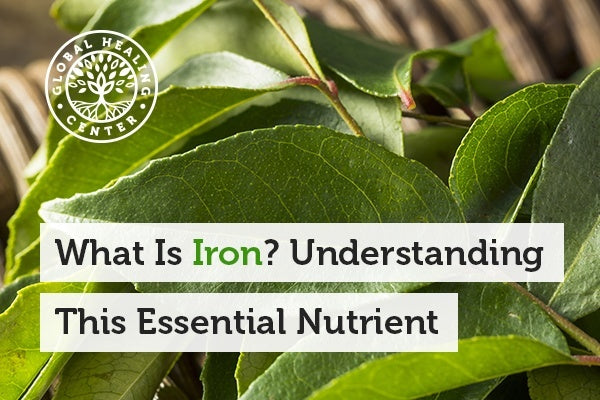What Is Iron? Understanding This Essential Nutrient

Biologically, iron is an essential mineral that your body requires to function properly. You only need trace amounts of this nutrient, but it’s absolutely vital to energy production, oxygen transportation, hormone synthesis, growth, development, brain function, immune activity, and healthy cell function.[1, 2]
What Is Iron?
Iron is an extremely common metal. In fact, it’s the fourth most abundant element on Earth. Humans have used iron for metalworking since ancient times. The metal was so important that we named an entire archaeological era after it. Depending on the region, the Iron Age lasted approximately from 1200 BC — 1 BC and signified a time when iron was the dominant toolmaking material.
Today, iron is still the most widely refined metal in the world, accounting for 90% of total metal production. We use it for building materials, machinery, tools, motor vehicles, shipbuilding, cookware, and steel.[3, 4] As important as iron has been to the technological advances of the human race, its most important role is in your body.
Iron’s Role in Your Body
Oxygen Transfer
Iron is a crucial component of hundreds of essential proteins and enzymes. The most important of these is hemoglobin, a protein that your red blood cells use to carry oxygen from your lungs to every other cell in your system. Hemoglobin accounts for about 70% of the iron in your body. A related protein is myoglobin. Myoglobin performs the same role as hemoglobin but is found in muscle tissue instead of blood. Other iron-binding proteins include ferritin and transferrin, which store and transport the mineral.[1]
Energy and Detoxification
If you find yourself experiencing constant unexplained fatigue, an iron deficiency may be to blame. Cytochromes are iron-containing enzymes that are critical to cellular metabolism. These enzymes are integral to the synthesis of ATP, the compound that releases energy in your cells. Cytochromes act as electron carriers. Certain cytochromes are also involved in the detoxification of drugs and pollutants, as well as the metabolism of fatty acids and vitamins A, D, and K.[2]
Iron Deficiency
Iron deficiency is an extremely common health issue. In fact, it’s the most common nutritional deficiency in the world. The World Health Organization estimates that a full 30% of the world’s population has low iron levels.[5] This can happen if you don’t get enough iron in your diet, or if you lose too much of your body’s existing supply. Humans lose trace amounts of their iron stores through normal excretion. Blood loss, including menstruation, causes much greater losses.[1]
Iron Deficiency Anemia
Anemia is a generalized term that refers to a low red blood cell count or low levels of hemoglobin in the red blood cells. There are many types of anemia, but by far the most common is iron deficiency anemia. Of the 1.62 billion cases of anemia worldwide, about half are due to iron deficiency.[1] Iron deficiency anemia is a serious condition that results from prolonged low iron levels. This condition can cause fatigue, pregnancy complications, and impaired physical and mental development.[4]
Testing for Iron Deficiency
Seek the help of a trusted health care provider if you suspect you suffer from low iron levels. They can perform any of several tests to determine your iron level. Laboratory tests can measure ferritin levels, iron binding capacity, transferrin, and total blood iron levels. Your health care provider can also check your hematocrit levels, which is a test to determine if you have too few red blood cells.[2]
How Much Iron Do I Need?
So how much iron do you need? The answer depends on a variety of factors, including, age, gender, and lifestyle. Infants should get all they need from their mother’s breast milk. Because of this, women who are pregnant or breastfeeding need more iron in their diets. A good prenatal vitamin should provide 17 mg of iron per dose.
The National Academy of Sciences Food and Nutrition Board recommends that vegans and vegetarians consume 1.8 times the RDA for iron due to the slower absorption rate of the nonheme form. Fortunately, this more controlled rate also makes nonheme iron much safer to consume in larger quantities. Consult the charts below to find your recommended daily allowance.[1]
Iron Recommended Dietary Allowances (RDAs) for Nonvegetarians
| Age | Male | Female | Pregnancy | Lactation |
|---|---|---|---|---|
| 0-6 months | .27 mg | .27 mg | N/A | N/A |
| 7-12 months | 11 mg | 11 mg | N/A | N/A |
| 1-3 years | 7 mg | 7 mg | N/A | N/A |
| 4-8 years | 10 mg | 10 mg | N/A | N/A |
| 9-13 years | 8 mg | 8 mg | N/A | N/A |
| 14-18 years | 11 mg | 15 mg | 27 mg | 10 mg |
| 19-50 years | 8 mg | 18 mg | 27 mg | 9 mg |
| 51+ years | 8 mg | 8 mg | N/A | N/A |
Iron Recommended Dietary Allowances (RDAs) for Vegans and Vegetarians
| Age | Male | Female | Pregnancy | Lactation |
|---|---|---|---|---|
| 0-6 months | .27 mg | .27 mg | N/A | N/A |
| 7-12 months | 20 mg | 20 mg | N/A | N/A |
| 1-3 years | 12 mg | 12 mg | N/A | N/A |
| 4-8 years | 18 mg | 18 mg | N/A | N/A |
| 9-13 years | 14 mg | 14 mg | N/A | N/A |
| 14-18 years | 19 mg | 27 mg | 48 mg | 18 mg |
| 19-50 years | 14 mg | 32 mg | 48 mg | 16 mg |
| 51+ years | 14 mg | 14 mg | N/A | N/A |
Sources of Iron
There are two main types of dietary iron — heme and nonheme. Heme iron is found in the blood and meat of animal products. Nonheme iron is found in plant sources like curry leaves, beans, spinach, nuts, and molasses. Your body absorbs heme iron more readily, but it only contributes about 10-15% of total iron intake for most people.[1]
Despite the lower bioavailability of nonheme iron, plant-based foods actually seem to encourage more efficient processing of the iron you get. This is likely due to the high vitamin C content of plant foods. When consumed together, vitamin C increases the bioavailability of iron. Iron-rich plant foods also have a higher iron content to calorie ratio. In other words, you can eat significantly fewer calories of spinach than steak and get the same amount of iron.[5]
Fortunately, there are plenty of iron-rich foods, both heme and nonheme, so almost any diet can be accommodated. Global Healing always advocates for a plant-based diet, but we do understand that this isn’t for everyone. Readers who do consume animal products can find iron in lean meat and seafood. Vegans and vegetarians can find plenty of dietary iron in legumes, dark chocolate, spinach, seeds, and many other iron-rich plant foods.
Iron Toxicity
There are some nutrients, like vitamin B12, that you simply cannot take too much of. If you exceed your daily requirements, your body simply excretes the rest. Iron is not one of these nutrients. This isn’t a case of “more is better.” Too much iron can be just as dangerous as too little. It’s important to find the right balance for your needs.
The risk of iron overload is greater in its elemental form, which is iron actually mined from the earth. Taking supplements containing 25 mg of elemental iron, particularly on an empty stomach, can cause nausea and constipation and reduce zinc absorption. Nonheme iron, whether in food or supplements, has a reduced risk of causing iron toxicity.
Genetic factors can also play a role. Hemochromatosis is a hereditary condition in which the body absorbs and accumulates excessive amounts of iron. It can increase the risk of cirrhosis of the liver, diabetes, heart damage, and reproductive and joint concerns. Those who have hemochromatosis should avoid vitamin C and iron supplements.[1, 2]
Iron Supplements
Make iron balance one of your health priorities. Too little can lead to the complications of deficiency; too much is dangerous and can cause toxicity. Avoid the extremes and find the right balance for your body. Most people should have no trouble getting all the iron they need from food, but supplementation may be necessary in some situations.
For a high-quality iron supplement, I recommend Iron. Iron contains 100% nonheme iron and is combined with a proprietary blend of thyme and echinacea to maximize bioavailability and prevent stomach discomfort normally associated with inferior iron supplements.
References (5)
- "Dietary Supplement Fact Sheet: Iron." National Institutes of Health. U.S. Department of Health and Human Services, 11 Feb. 2016. Accessed 17 Apr. 2017.
- Higdon, Jane, Ph.D., et Al. "Iron." Linus Pauling Institute Micronutrient Information Center. Oregon State University, May 2016. Web. 02 May 2017.
- "Iron - Element Information, Properties and Uses." Periodic Table. Royal Society of Chemistry, n.d. Web. 02 May 2017.
- "The Uses of Iron." Minerals Downunder - Australian Mines Atlas. Commonwealth of Australia, n.d. Web. 02 May 2017.
- "Iron in the Vegan Diet." The Vegetarian Resource Group (VRG), The Vegetarian Resource Group, Accessed 17 Apr. 2017.
†Results may vary. Information and statements made are for education purposes and are not intended to replace the advice of your doctor. If you have a severe medical condition or health concern, see your physician.

Dr. Edward Group, DC
FOUNDER | HEALER | ADVOCATEDr. Group, DC is a healer and alternative health advocate, and an industry leader and innovator in the field of natural health who is dedicated to helping others. He is a registered doctor of chiropractic (DC), a naturopathic practitioner (NP), and proud alum of Harvard Business School and MIT Sloan School of Management. Dr. Group, DC is the founder of Global Healing – a mission and vision he has shared through best-selling books and frequent media appearances. He aims to spread his message of positivity, hope, and wellness throughout the world.










